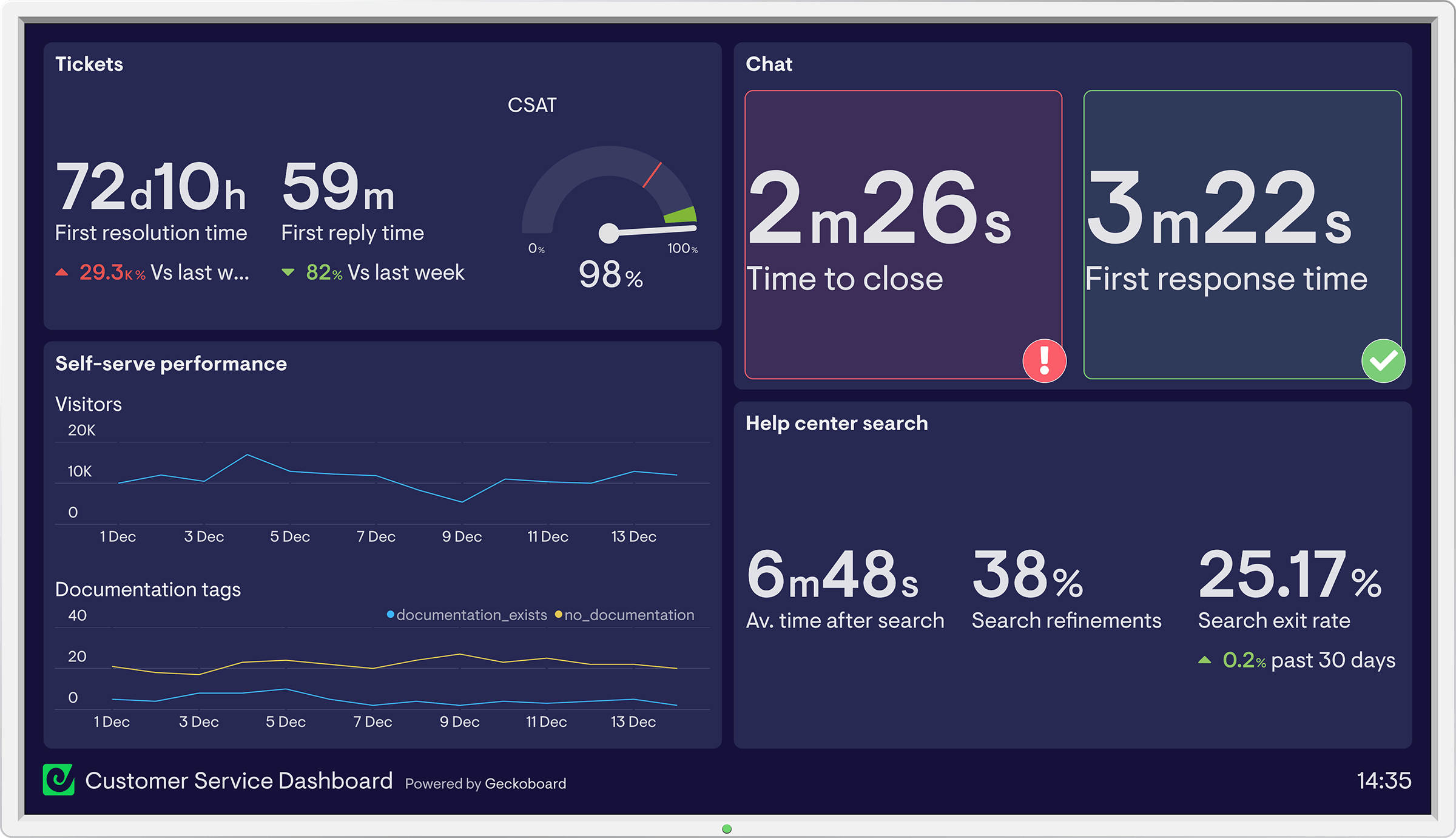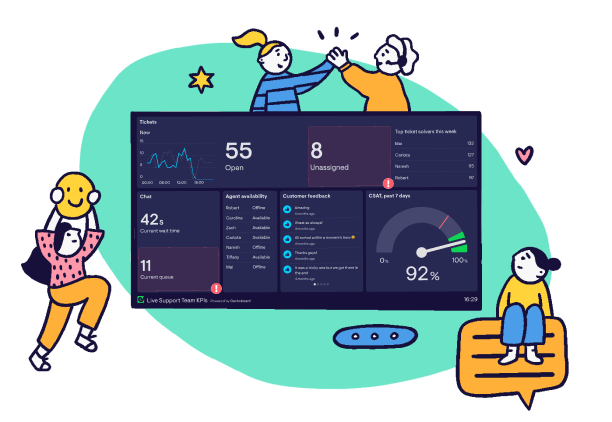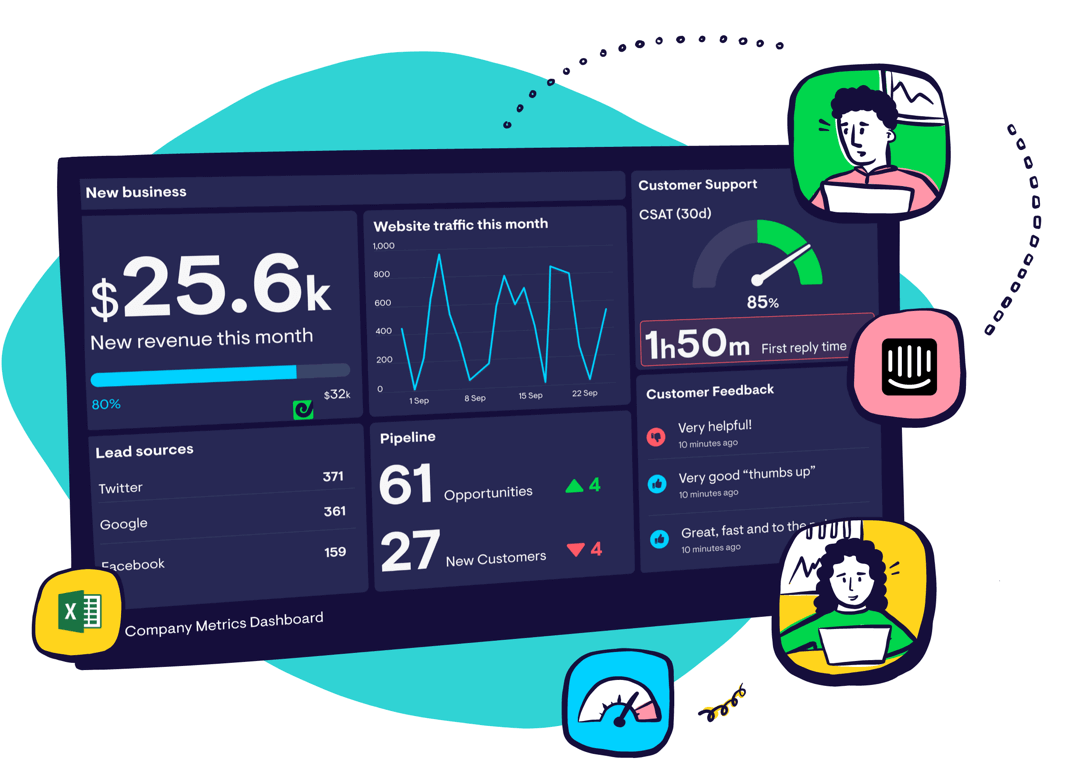Call Abandonment Rate
What is Call Abandonment Rate?
Call Abandonment Rate is the proportion of inbound calls to a call center where the customer hangs before their call is answered by an agent. It is a key metric for measuring the performance of your call center and overall customer service.
Why is it important to monitor your Call Abandonment Rate?
For companies that provide phone support as a channel, Call Abandonment Rate is an essential customer support KPI that should be consistently monitored.
A high Call Abandonment Rate is most often the result of long hold times and is likely to result in poor customer satisfaction.
Other problems affecting Call Abandonment Rate include poorly designed IVR (Interactive Voice Response) menus and excess transferring between departments.
A low Call Abandonment Rate (around 5% is considered acceptable) usually indicates calls are being answered promptly. Fewer abandoned calls generally means that your transference or IVR settings are correct and easy for customers to understand.
Remember that a low Call Abandonment Rate doesn’t necessarily mean customers are receiving a great experience. The call may not answer their query satisfactorily or their issue may require multiple calls to resolve.
How to calculate Call Abandonment Rate
Call Abandonment Rate is calculated by dividing the number of calls abandoned by the total number of calls received.
[No. calls Abandoned / Total no. calls] × 100 = Abandonment Rate (%)
Call Abandonment Rate is usually expressed as a percentage so in the formulae above we multiply the ratio by 100.
Sometimes you may need to calculate the number of calls abandoned first by deducting the number of calls answered from the total number of calls received.
No. calls abandoned = No. calls received - No. call answered
Resulting in:
[No. calls received - no. calls answered / Total no. calls] × 100 = Abandonment Rate (%)
When calculating Call Abandonment Rate it is common to exclude calls that are very short to avoid misdials and other accidental calls from affecting the stats. However, care is required not to adversely impact the metric by excluding too many calls. It’s also important to track the drop off of callers hanging up while going through a self service menu Instead of counting towards the call abandonment rate, this just counts against the success of the process.
Why are Call Center Calls abandoned?
The reasons for a call being abandoned include:
- The customer hanging up out of frustration because they were left waiting too long. This effect will be amplified if the customer is being charged for the call.
- The caller found the solution to their problem on their own and therefore ended the call.
- The customer decided that the call center wouldn’t be able to help them with their query so they ended the call.
- The customer was disconnected unintentionally from the call.
- Frustrating IVR menu choices, making it difficult for the caller to get through to an agent.
Unless there’s a technical issue causing calls to be dropped, or customers are struggling through a poorly designed IRV system, callers hanging up out of frustration is typically the main issue that needs addressing.
How to improve Call Abandonment Rate
Call Abandonment correlates strongly with customer satisfaction, so it’s an important metric to keep low for companies that provide phone support.
Here are some tactics you can apply to lower your Call Abandonment Rate:
1. Monitor your current call wait time and number of calls on hold in realtime
By monitoring the number of calls currently on hold and your current wait time you can take action when either number reaches a certain threshold. This may include reallocating more of the team to answering calls or trying to wrap up current calls more quickly.
Using a realtime dashboard for this can be extremely helpful. Customer support dashboards give you a live view of the service levels your team is delivering across different channels. This helps you keep tabs on all your metrics and quickly take action if you’re falling behind.

2. Look for general efficiencies to reduce the number of calls
By investing more in self service options, or fixing common issues that result in customer calls, you can reduce the overall number of calls and therefore wait times. In addition to improving Abandonment Rate, it’s also likely to improve CSAT and your Customer Effort Score (CES) as customers will either experience fewer issues or will be able to resolve more themselves.
Another strategy for reducing overall number of calls is to provide more channels e.g. chat support which may resolve customer issues faster or require the customer to waste less time.
Be careful not to just make it harder to reach the call center as this is likely to negatively impact your customer satisfaction. The same can be said for paid support lines - while you may receive fewer calls, your customers may feel less supported.
3. Find ways to reduce the time spent on each call
By finding ways to reduce the amount of time spent on each call, agents can be freed up to answer more calls.
Techniques here may include better training, improved tooling, and smarter allocation of calls using automated systems upfront.
4. Offer callbacks
By offering to call customers back, customers can avoid long wait times and get on with their day. Call backs need to be timely to avoid custom frustration. However, callbacks are not always efficient from an agent’s perspective as customers may not pick up first try etc. Solutions where the customer picks a convenient time slot help address this problem.
Generally it’s preferable for all parties to answer inbound calls promptly, but offering callbacks during periods of high demand can help prevent long call queues resulting in high abandonment and low customer satisfaction.
If you do offer callbacks you need to make sure customers hanging up after arranging a callback are not classed as abandoned calls.
5. Improve your agents scheduling
Check your agent scheduling against your call data and try to make sure you have most agents allocated when you expect most calls.
If an event is planned (e.g. a new product release or a pricing change) that’s likely to result in a spike of calls try and anticipate that and arrange schedules accordingly. Demand is often also seasonal. This is especially the case for B2C businesses who may need to make special provisions for busy periods like Chrismtas.
If the strategies above fail to make a dent in your Call Abandonment Rate then your only remaining option may be to hire more agents.
Give your support team a boost
With Geckoboard’s real-time dashboards, everyone knows exactly what’s happening in CS right now.
Find out more
Industry benchmarks for Call Abandonment Rate
As with all KPIs, benchmarks vary widely between industry and business to business so can only act as a loose guide.
According to Hubspot, typical Call Abandonment Rates are between 5 and 8% and 80% of calls are answered within 20 seconds. If your call abandonment rate is creeping towards 10%, you’re reaching the high territory.
There’s a limit to how low Call Abandonment Rate can be, some calls will end for reasons outside of your control. For example the caller may drop connection or need to go do something else. If your Abandonment Rate is already low, improving it further is unlikely to meaningfully improve Customer Satisfaction.
